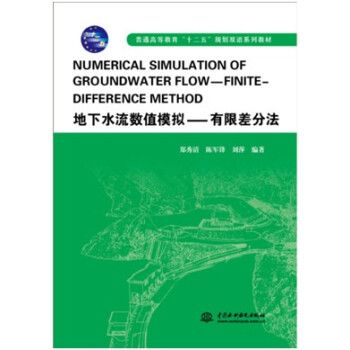內容簡介
《地下水流數值模擬:有限差分法》是國內地下水流數值模擬的一本雙語教材,包括基本理論、Visual MODFLOW 軟體使用介紹和實踐套用三部分,知識點系統而全面。第1部分是地下水流數值模擬的基礎理論部分,介紹了有關基本概念、基本定律、基本微分方程、數學模型的建立和有限差分方法等。第二部分介紹了Visual MODFLOW 軟體使用步驟,包括水流模型的輸入、運行和輸出。第三部分為基於Visual MODFLOW軟體的地下水流數值模擬套用實例部分,包括地下水庫截滲牆建設的數值模擬和水源地保護區劃分的數值模擬。
作者簡介
鄭秀清,女,太原理工大學教授,博士生導師。主要授課科目為溶質運移原理、孔隙介質流動力學、Groundwater simulation、
地下水動力學、工程滲流、構造地質學、動力地質學原理、水文地質與工程地質。
目錄
ABSTRACT
PREFACE
Chapter 1 Introduction
1.1 Brief of Groundwater
1.1.1 Importance of Groundwater
1.1.2 Groundwater Resources Management
1.2 Process of Groundwater Modeling
Chapter 2 Mathematical Model of Groundwater Flow
2.1 Basic Concepts
2.2 Basic Law
2.2.1 Law of Energy Conservation
2.2.2 Law of Mass Conservation
2.3 Basic Equation of Groundwater Flow
2.3.1 Basic Equation for Steady Incompressible Flow
2.3.2 Basic Equation for Non-steady Compressible Flow
2.4 Boundary Conditions
2.4.1 Boundary Conditions
2.4.2 Initial Conditions
2.5 Mathematical Model
Chapter 3 Numerical Method-Finite - Difference Method
3.1 Main Ideas and Solving Steps
3.1.1 Main Ideas of Finite - Difference Method
3.1.2 Steps of Solving Groundwater Flow Problem by Difference Method
3.2 Finite Difference Formulae
3.2.1 Finite Difference Approximation
3.2.2 Convergence and Stability
3.3 Steady Flow in Confined Aquifers
3.3.1 1-D Steady Flow
3.3.2 2-D Steady Flow
3.4 Transient Flow in Confined Aquifers
3.4.1 1-D Transient Flow
3.4.2 2-D Transient Flow
3.5 Transient Flow in Unconfined Aquifers
Chapter 4 Introduction and Tutorial of Visual MODFLOW
4.1 Introduction of Visual MODFLOW
4.1.1 Brief Introduction of Visual MODFLOW
4.1.2 About the Interface
4. 1.3 Main Menu Screen
4.1.4 Screen Layout
4.2 Instructions of Example Model
4.3 Creating and Defining a Flow Model
4.3.1 Generating a New Model
4.3.2 Refining the Model Grid
4.3.3 Adding Wells
4.3.4 Assigning Model Properties
4.3.5 Assigning Model Boundary Condition
4.3.6 Assigning Particles
4.4 Running Visual MODFLOW
4.4.1 Run Options for Flow Simulations
4.4.2 Engines to Run
4.5 Output Visualization
4.5.1 Head and Contouring Options
4.5.2 Velocity Vectors and Contouring Options
4.5.3 Pathlines and Pathline Options
Chapter 5 Numerical Simulation of Impervious Wall Construction of Xizhang Basin Groundwater Reservoir in Taiyuan
5.1 Model Objectives
5.2 Overviews of the Xizhang Basin
5.2.1 Regional Geography
5.2.2 Regional Geological and Hydrogeological Conditions
5.2.3 Social and Economic Situation
5.3 Conditions for the Construction of Underground Reservoir
5.4 Groundwater Flow Model for Xizhang Basin
5.4.1 Hydrogeological Conceptual Model
5.4.2 Establishment Groundwater Model
5.4.3 Identification and Calibration of the Model
5.5 Influences of Impervious Wall on Groundwater Flow
5.5.1 Input Data for Wall Boundary
5.5.2 Simulation Impervious Wall by Wall Boundary
5.5.3 Correction of Impervious Wall Parameters
5.5.4 Effects of Impervious Wall Construction on the Simulation of Groundwater Flow

